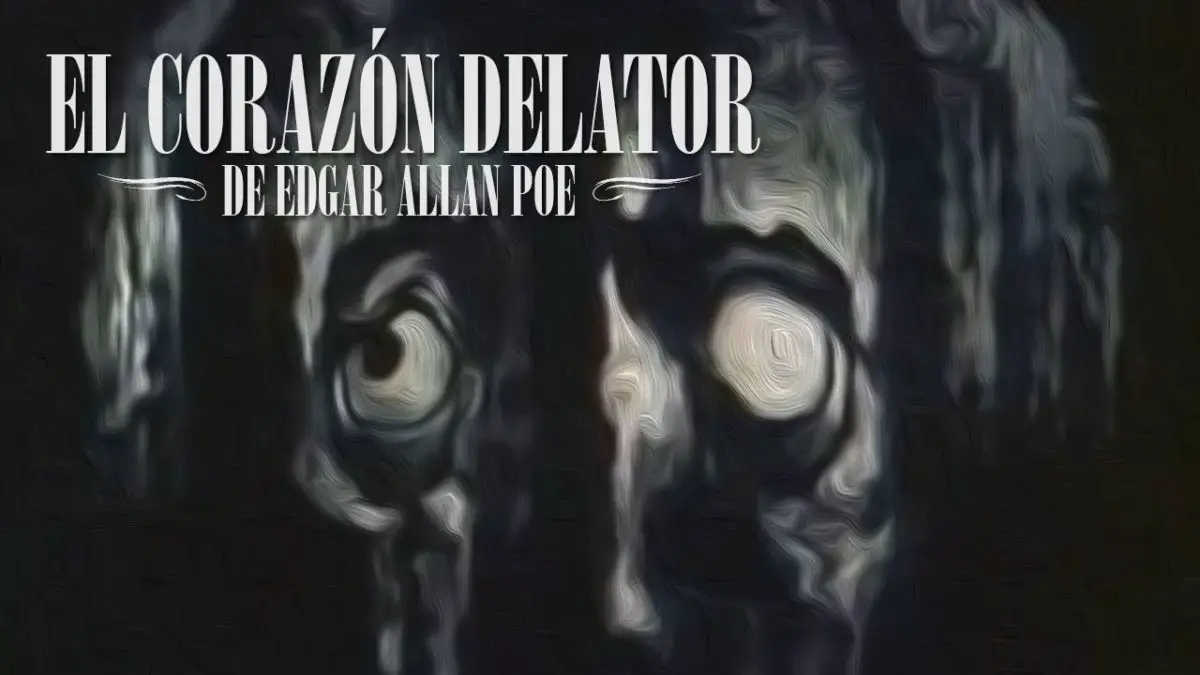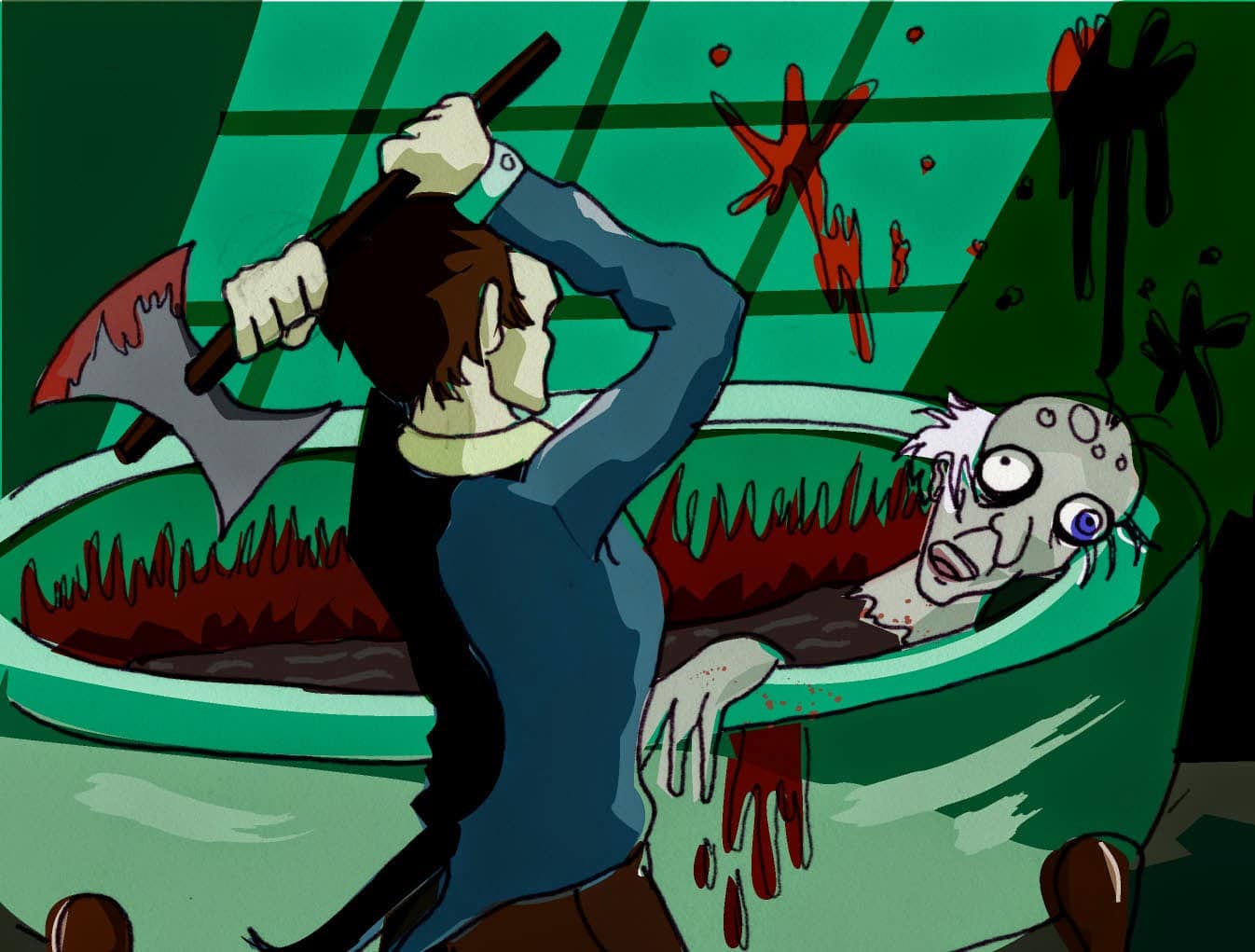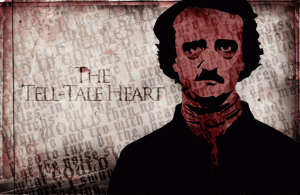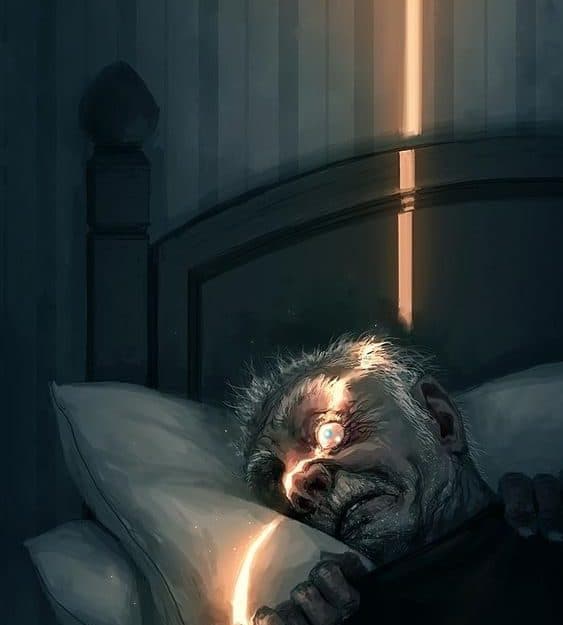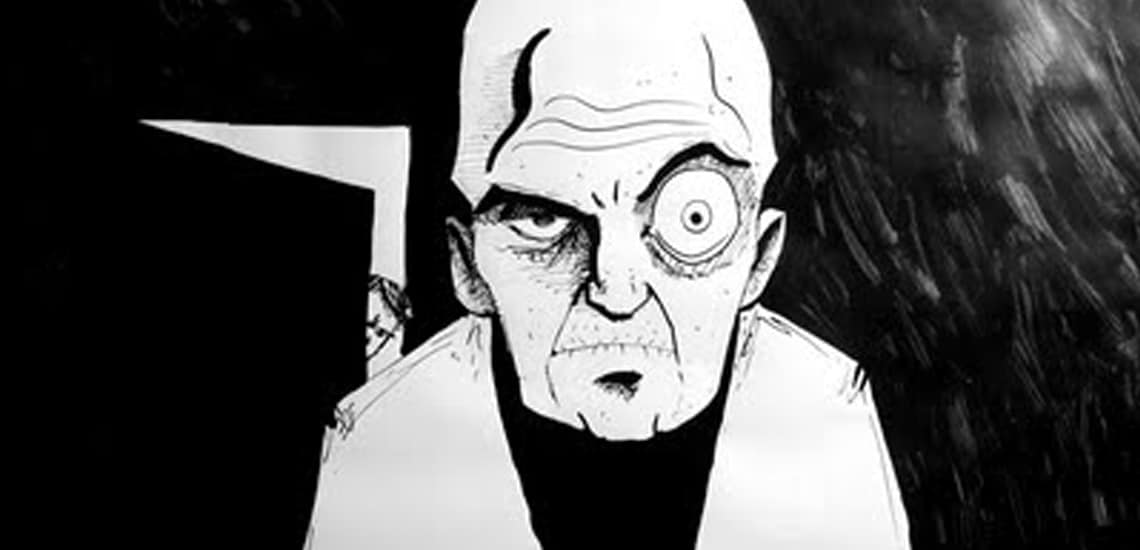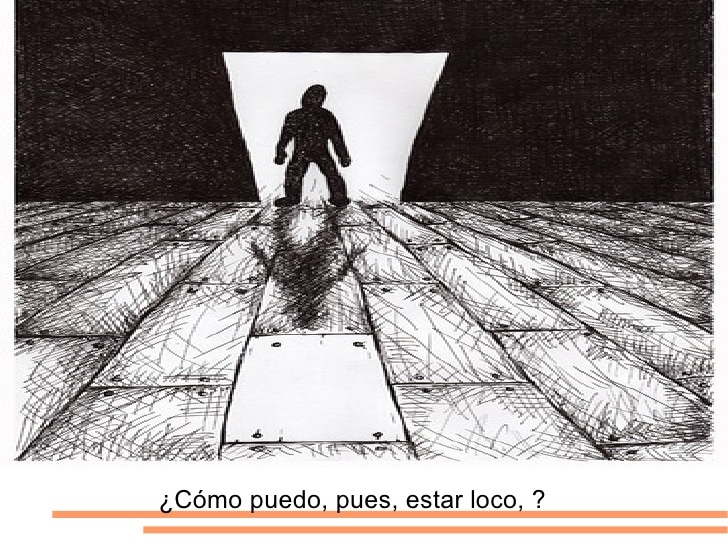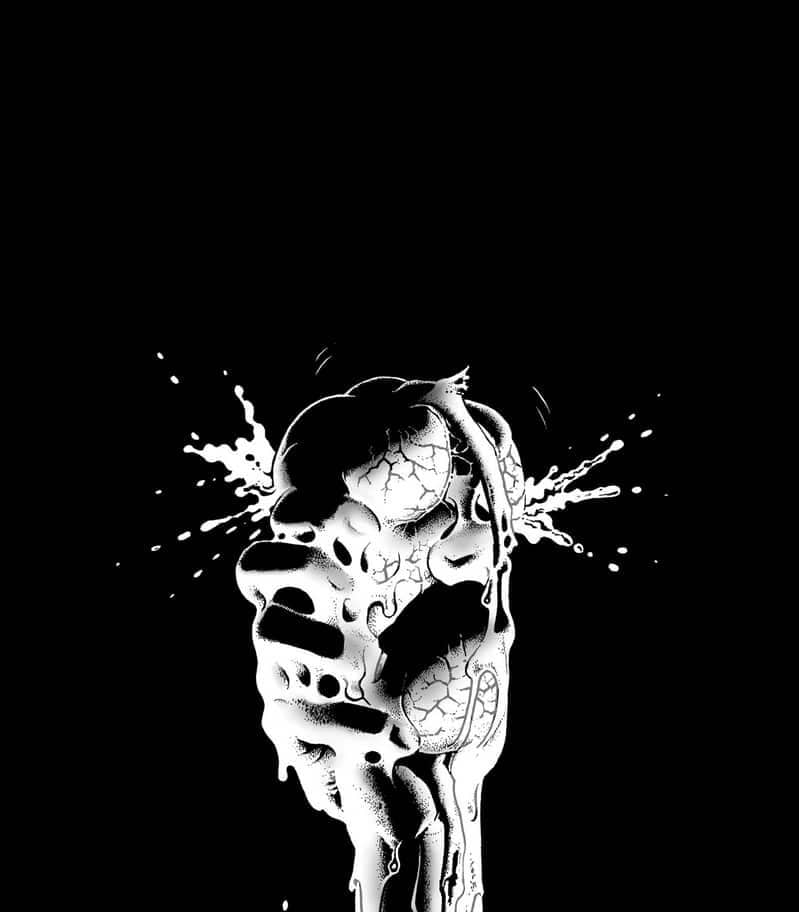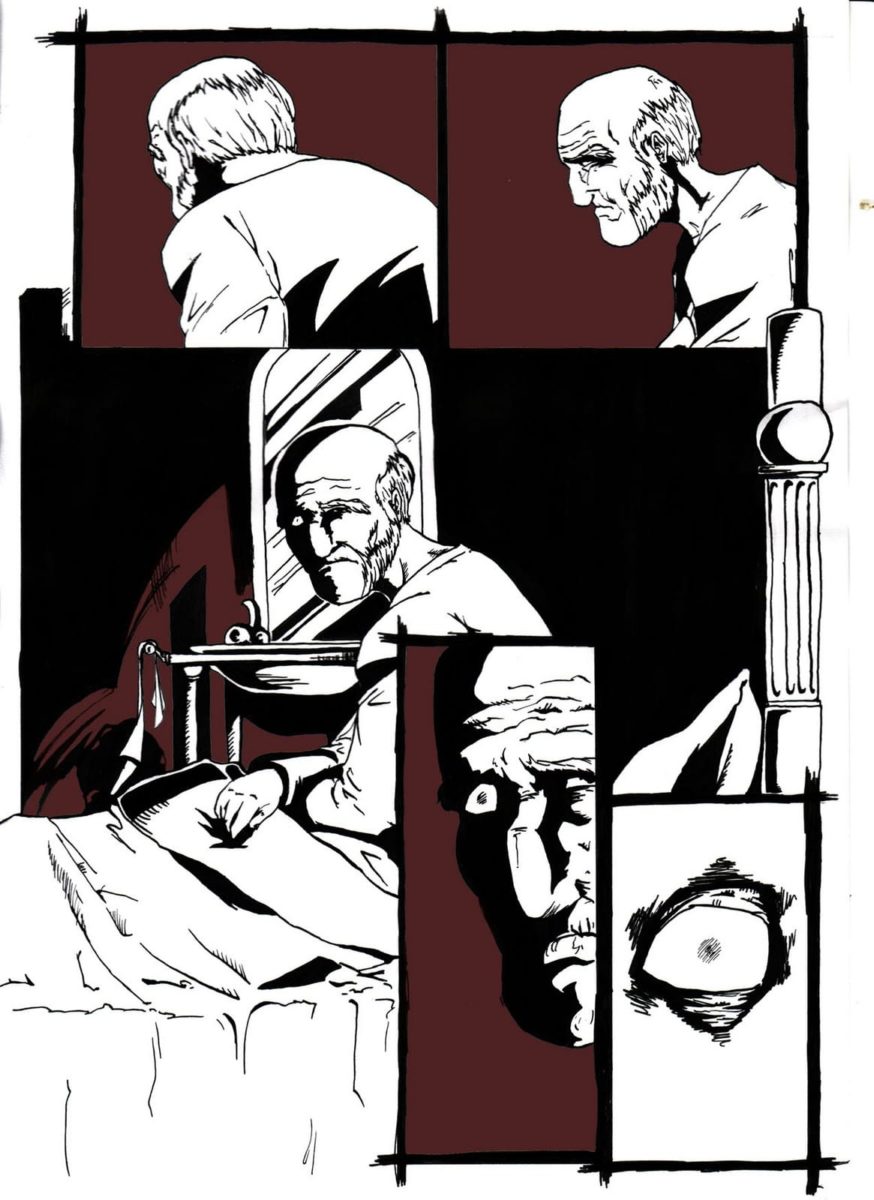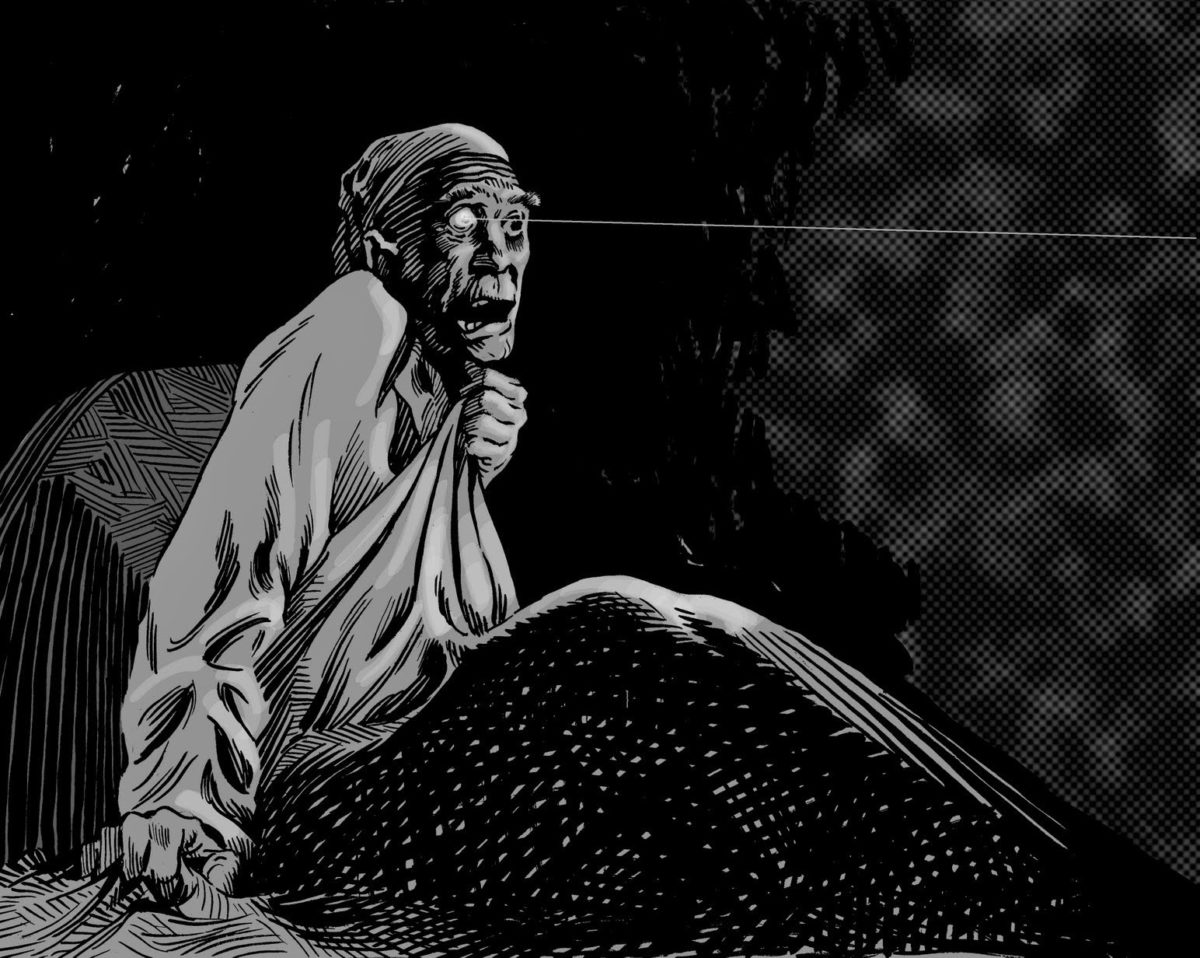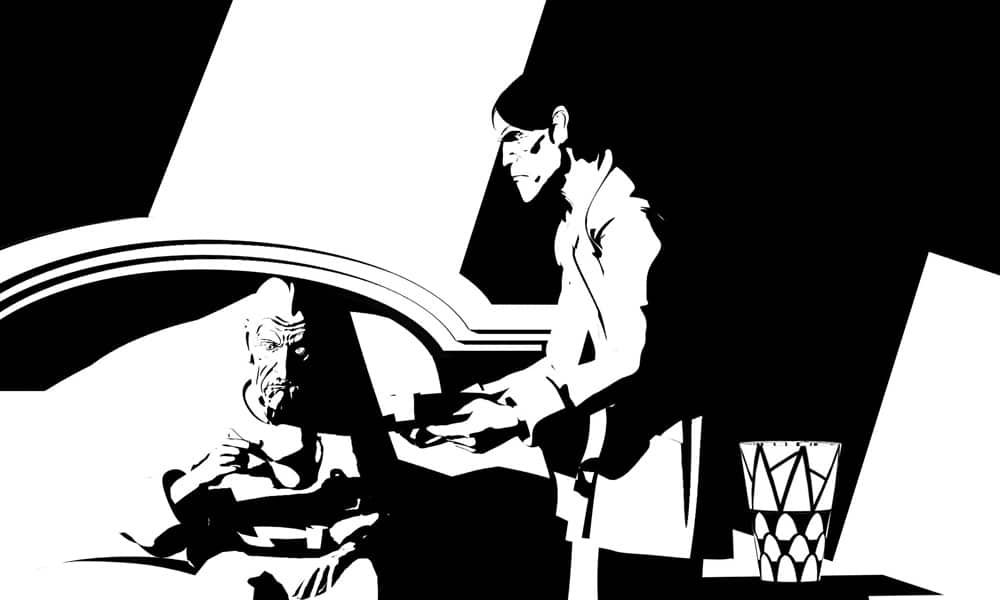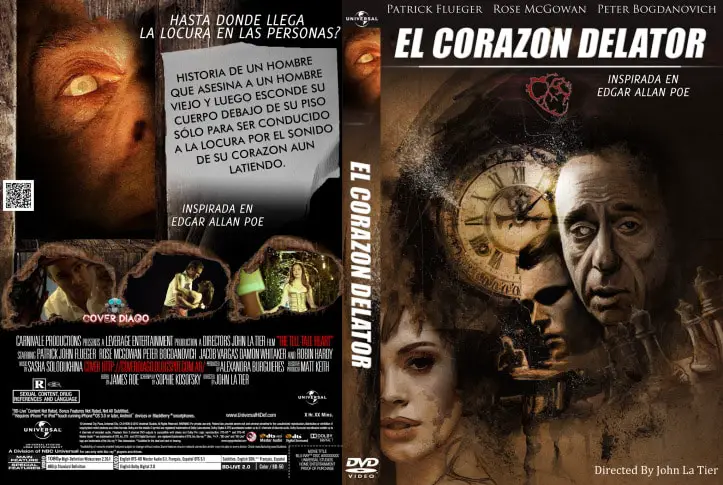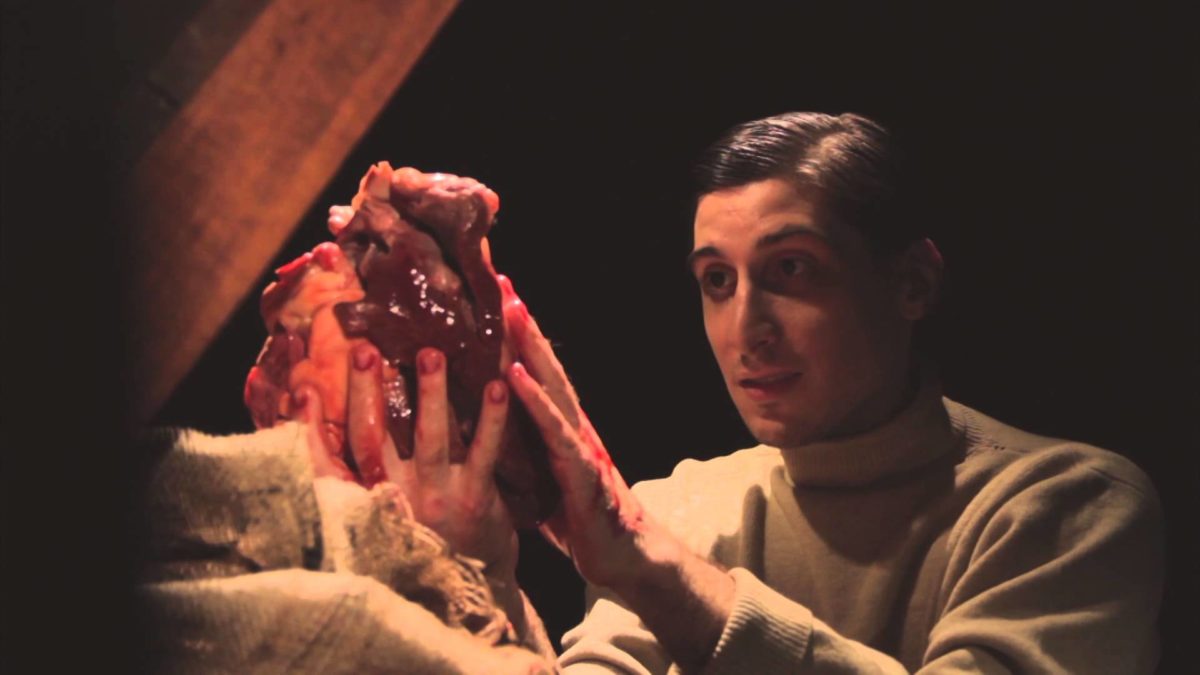The Tell-Tale Heart is a short novel of the horror genre written by Edgar Allan Poe, read on to learn all about this chilling tale.
The Tell-Tale Heart is a short story by the American writer Edgar Allan Poe, first published in 1843. It is told by an anonymous narrator who tries to convince the reader of his sanity by describing a murder he has committed.
The victim was an old man with a transparent “vulture’s eye”, as the narrator calls it. The narrator emphasises the careful calculation of the murder, and he hides the body by dismembering it and hiding it under the floorboards.
Eventually, the narrator’s guilt, or a mental disorder like that of the main character in Stephen King’s Misery, causes him to hear a pounding sound, which he interprets as the dead man’s heart beating.
Find out 10 curious facts about Edgar Allan Poe in this video:
Summary of The Tell-Tale Heart
The Tell-Tale Heart tells the story of a man and an old man he lives with, who has a pale, cloudy, blue “vulture” eye, which so troubles the narrator that he plans to murder the old man, although he also insists that he loves the old man.
The narrator insists that his careful precision in carrying out the murder proves that he cannot be mad, rather like the strange case of Doctor Jekyll and Mr Hyde, good and evil in the same person. For seven nights, the narrator opens the door to the old man’s room to shed some light on the “evil eye”. But the old man’s vulture’s eye is always closed, so it is impossible to “do the job”.
On the eighth night, the old man wakes up after the narrator’s hand slips and makes a noise, interrupting the narrator’s nightly ritual. But the narrator does not give up and, after a while, decides to open his lantern.
A single, thin beam of light shines out and lands precisely on the “evil eye”, revealing it to be wide open. Hearing the old man’s heart beating loudly and dangerously in terror, the narrator decides to attack, jumping up with a loud scream and smothering the old man with his own pillow.
The narrator dismembers the body and hides the parts under the floorboards, taking care to conceal all signs of the crime. Nevertheless, the old man’s screams during the night prompt a neighbour to inform the police, whom the narrator invites to look around.
He claims that the cries he heard were his own in a nightmare and that the man is not in the country.
Confident that they will find no evidence of murder, the narrator brings them chairs and they sit down in the old man’s room, in the very place where the body is hidden, suspecting nothing because the narrator has a pleasant, unassuming manner.
The narrator begins to feel uncomfortable and notices a ringing in his ears. As the sound grows louder, the narrator concludes that it is the old man’s heartbeat, coming from under the floorboards.
The sound grows louder and louder, but the officers seem to pay no attention. Terrified by the violence of the heartbeat, and convinced that the officers are aware not only of the heartbeat but also of his guilt, the narrator breaks down and confesses, telling them to break the floorboards to reveal the remains of the old man’s body.
Watch the story of The Tell-Tale Heart in this animated short film:
Features of The Tell-Tale Heart
It is unclear what, if any, relationship there is between the old man and his murderer. The narrator denies having any feelings of hatred or resentment towards the man who, he says, never did him any harm. He also denies that he killed out of greed. The specific motivation for the murder (apart from the narrator’s dislike of the old man’s eye), the relationship between the narrator and the old man, and other details remain unclear.
It has been speculated that the old man represents a father figure, the narrator’s owner, or that the narrator works for the old man as a servant, and that perhaps his ‘vulture’s eye’ represents some kind of hidden secret or power. The ambiguity and lack of description of the main characters contrasts sharply with the specific details of the plot leading up to the murder.
The Tell-Tale Heart is a first-person narrative by an anonymous narrator who, unlike Edgar Allan Poe’s composition of The Raven, which is a poem, insists that he is sane but suffers from an illness (nervousness) that causes “hyperactivity of the senses”.
Because of the ambiguity surrounding the identity of the narrator of the story, the gender of the narrator cannot be known with certainty. However, for ease of description, masculine pronouns will be used throughout this article.
Analysis of The Tell-Tale Heart
The Tell-Tale Heart uses an unreliable narrator, just as Poe did in The Black Cat. The accuracy with which the narrator recounts the old man’s murder, as if the stealthy manner in which he carried it out were proof of his sanity, reveals his monomania and paranoia. The focus of the story is the perverse plan to commit the perfect crime.
The narrator of The Tell-Tale Heart is generally assumed to be male. However, some critics have suggested that the narrator may be a woman; no pronouns are used to clarify either way.
The story begins with an ongoing conversation between the narrator and another person who is not identified in any way. It has been speculated that the narrator is confessing to a prison warden, a judge, a reporter, a doctor or (anachronistically) a psychiatrist.
The narrator begins by protesting his sanity, but such a forceful statement immediately raises the suspicion that he may be confused or delusional. His inexplicable hatred of the old man’s eye and his fleeting, bizarre mention of heaven and hell give the impression of an eccentric man who may not be as aware of his own sanity as he claims.
The narrator seems to think that a person can only be mad if he is not methodical. But his methodical efforts to kill an old man because he dislikes the human eye is madness! That he actually needs to see the eye to commit the crime makes him seem even madder. Poe intensifies the suggestion of madness that he planted at the beginning of the story.
In any case, the narrator explains himself in great detail. What follows is a study of terror, but more specifically the memory of terror, as the narrator recounts events from the past.
The narrator’s chilling laughter, his inability to act until he sees the eye open, and his pleasant tone with the old man every morning all combine to give the impression that the narrator is a madman.
The first word of the story, “True!”, is both an admission of guilt and an assurance of reliability. This introduction also serves to grab the reader’s attention. Each word helps to move the story forward, illustrating Poe’s theories on short story writing.
The story is driven not by the narrator’s insistence on his ‘innocence’, but by his insistence on his sanity. This is self-defeating, however, because in trying to prove his sanity, he fully admits that he is guilty of murder.
The strange thing about this rivalry between the narrator and the old man is that it is not really hateful. The narrator seems to have a great deal of sympathy for the old man. In fact, he knows exactly how frightened the old man is, because he has felt the same mortal terror before. But the narrator’s sympathy is perverted by his strange hatred of the old man’s eye.
His denial of insanity is based on his systematic approach and precision, providing a rational explanation for irrational behaviour. However, this rationality is undermined by his lack of motivation (“There was no object. There was no passion”). Nevertheless, he says, the idea of murder “haunted me day and night”.
The final scene of the story shows the result of the narrator’s guilt. Like many characters in gothic fiction, he allows his nerves to dictate his nature. The same scene occurs in the final part of The Masque of the Red Death by the same author.
Despite his best efforts to defend himself, the acuity of his senses, which allows him to hear the heartbeat beneath the floorboards, is evidence that he is genuinely angry. Poe’s contemporaries may have been reminded of the controversy over the insanity defence in the 1840s.
The narrator describes the sight of the eye and the sound of the heart as if he were actually seeing them, attributing the violence of his reactions to his naturally sensitive senses.
But Poe stages the scene so that we suspect that the narrator’s disturbed mind is inventing these horrors and acting in a self-destructive way. The sound of the old man’s heart may well be the sound of his own heart, growing louder and louder as the narrator becomes more and more disturbed.
The narrator claims to have a disease that causes hypersensitivity. It is not clear, however, whether the narrator really has very acute senses or whether he is imagining things. If his condition is true, what he hears at the end of the story may not be the old man’s heart, but the death beetle.
The narrator only admits to hearing beetles on the wall after startling the old man from his dream. According to superstition, death beetles are a sign of impending death. One species of death watch beetle bangs its head against surfaces, presumably as part of a mating ritual, while others make ticking noises.
Henry David Thoreau observed in an 1838 article that death watch beetles make sounds similar to heartbeats. The beating might even be the sound of the narrator’s own heart.
Poe maintains suspense with the coincidence of the police call and the chiming of the clock. The reminder of the passage of time is heartbreaking, but even more disturbing is the narrator’s apparent calm. Again, he seems to take his calm as a sign of his sanity, when in fact it seems to the reader to be a sign of his utter insanity.
Alternatively, if the beating is really a figment of the narrator’s imagination, it is this uncontrolled imagination that leads to his own destruction.
It is also possible that the narrator suffers from paranoid schizophrenia. Paranoid schizophrenics often have auditory hallucinations. These auditory hallucinations are most often voices, but can also be sounds.
The relationship between the old man and the narrator is unclear. Their names, occupations and places of residence are not given, which contrasts with the strict attention to detail in the plot. The narrator may be the old man’s servant or, more often, his son.
In this case, the “vulture’s eye” of the old man as a father figure may symbolise parental vigilance or parental principles of good and evil. The killing of the eye is therefore a removal of conscience.
The eye can also represent secrecy: only when the eye is open in the final night, piercing the veil of secrecy, is the murder carried out.
This is the perfect example of a character whose mind is working against itself. The narrator’s paranoia leads him into extremely realistic delusions about the suspicions of those around him, even though it seems to the reader that they have no suspicions at all. His psychological instability dooms him more than anything else.
Richard Wilbur has suggested that the story is an allegorical representation of Poe’s poem “For Science”, representing a struggle between imagination and science. In The Tell-Tale Heart, the old man may represent the rational, scientific mind, while the narrator represents the imaginative.
Watch this video for a review and summary of the story:
Characters in The Tell-Tale Heart
The main characters in The Tell-Tale Heart are two: the narrator, who recounts the murder of an old man in an attempt to prove his sanity, but whose speech and behaviour betray his lack of sanity.
The old man who lives with the narrator and becomes the victim of murder when his “evil eye” begins to torment the narrator.
Although there are two characters involved in the story, an old man and the younger man who lives with him, there is really only one character. An examination of the nature of the narrator’s obsession shows how Poe bases this story on a divided psyche.
The narrator insists that he loves the old man, has no personal animosity towards him, does not want his money, and has not been hurt by him. Instead, he says he wants to kill the old man for his eye, though there is no way to understand this obsession, the reader must determine the method and meaning of madness. For Poe, there is no such thing as meaningless madness in fiction. You might also want to read The Mystery of Salem’s Lot by Stephen King, another writer of horror and mystery fiction.
The plot of The Tell-Tale Heart
Two main themes in Edgar Allan Poe’s The Tell-Tale Heart are guilt and madness (this theme of madness can also be seen in the character in The Shining). The narrator seems unable to cope with his guilt and eventually confesses to the police, ruining his “perfect crime”.
The narrator’s sanity is also in question. His justifications for killing the old man, and his actions throughout the story, suggest that the narrator has indeed descended into madness.The story shows a rapid change in the narrator’s psyche. At first, he is very proud of himself and thinks he is very clever for getting away with murder.
When the police arrive, he coolly tells them that everything is fine and takes them to the old man’s room, but his confidence gets the better of him. While he is in the room, his guilty conscience begins to bother him and he begins to imagine that the old man’s heart is still beating. The ringing in his ears represents his conscience and his growing mental instability.
The narrator begins to behave more and more erratically, arguing about trivialities in a high tone and with violent gestures. Eventually it becomes clear that the narrator is losing his mind, and it may have been clear to the police all along that he had done something wrong. You may want to check out the story of The Witches of Salem, which we recommend.
https://www.youtube.com/watch?v=-HtYhXl63kI
Editorial of The Tell-Tale Heart
The story was first published in January 1843. The Tell-Tale Heart is widely regarded as a classic of gothic fiction and is one of Edgar Allan Poe’s most famous short stories.
The Pioneer: A Literary and Critical Magazine, a short-lived Boston magazine edited by James Russell Lowell and Robert Carter, who were listed as “owners” on the cover, was commissioned to publish the story.
The magazine was published in Boston by Leland and Whiting and in Philadelphia by Drew and Scammell.
Edgar Allan Poe was probably paid $10 for the story. The original publication included an epigraph quoting Henry Wadsworth Longfellow’s poem “A Psalm of Life”.
The story was slightly revised when it was republished in the 23 August 1845 issue of the Broadway Journal. This edition omitted Longfellow’s poem because Poe believed it had been plagiarised. The Tell-Tale Heart was reprinted several more times during Poe’s lifetime.
The moral of The Tell-Tale Heart
The moral of this play could be guilt; the human heart cannot bear the burden of guilt, especially in the case of murder. The guilty must somehow confess or be consumed by their conscience.
The Tell-Tale Heart is what is commonly known as the perfect crime story. In this very common genre, a man or woman commits what he or she thinks is a perfect crime, usually murder, but a small clue gives justice a way to get to the killer.
This formula was used for many years in old radio shows and then in television shows. It was used repeatedly in “Alfred Hitchcock Presents” on television and later in the hit show “Columbo” starring Peter Falk.
The theme of most perfect crime stories is that there is no such thing as a perfect crime. Poe wrote several perfect crime stories in which the killer is caught because of something he overlooked, but he also wrote one perfect crime story in which the killer gets away with it.
In this audio video, watch the story of Edgar Allan Poe’s The Tell-Tale Heart:
The Tell-Tale Heart short film
This work has had several incarnations in the world of cinema, the first of them in 1941, The Tell-Tale Heart, directed by Jules Dassin, is a dramatic film that lasts 20 minutes and is based on the story by Edgar Allan Poe.
The film marked Dassin’s directorial debut after working as an assistant to Alfred Hitchcock and Garson Kanin. It is typical of the short adaptations of classic literary studies that preceded feature films in the 1930s and 1940s.
In this short film we see that a young weaver, after years of verbal and emotional abuse by his master, decides to murder him. Before the old man dies, he predicts that his killer will eventually succumb to an overwhelming sense of guilt and betray himself.
Shortly after the man’s death, the weaver begins to hear several sounds: a clock, a dripping faucet and rain falling into a metal pot on the other side of the window, which convince him that he can still hear his victim’s heart beating beneath the boards where he has buried him. When two sheriff’s deputies turn up at the house the next day, he confesses his crime to clear his tortured conscience.
The stars of this short film were Joseph Schildkraut as the young man, Roman Bohnen as the old man, Oscar O’Shea as the first deputy sheriff and Will Wright as the second deputy sheriff. The film was released on DVD by Warner Home Video in August 2005.
In an article on Jules Dassin written the week of his death, Time magazine film critic Richard Corliss described The Tell-Tale Heart as possibly the first film to be influenced by Citizen Kane. This short film is a veritable dumpster fire of Orson Welles tropes: the crouching camera, the chiaroscuro lighting, the use of silences and sound effects to deepen the mood”.
Here’s this video of actor Vincent Price’s performance from The Tell-Tale Heart:
Another version of The Tell-Tale Heart, a 1960 British horror film directed by Ernest Morris and produced by the Danzigers. The screenplay by Brian Clemens and Eldon Howard is a loose adaptation of the 1843 short story of the same name by Edgar Allan Poe.
In the play, the character of Edgar Marsh, a shy librarian obsessed with eroticism, falls in love with his neighbour Betty Clare when he sees her undressing in her bedroom. He invites her to dinner and, although she is clearly uncomfortable with his attention, he fills her with jewels and fantasises about her future.
Complications arise when he introduces her to his friend Carl Loomis, whom Betty finds much more attractive. To eliminate the competition, Edgar beats Carl to death with a poker and buries him under the floorboards of his piano room.
His overwhelming guilt leads him to believe that a ticking metronome and the incessant dripping of a water tap are actually the sound of his victim’s still-beating heart. The cast includes Laurence Payne as Edgar Marsh, Adrienne Corri as Betty Clare and Dermot Walsh as Carl Loomis.
The production cost around £15,000 at the time, the typical budget for a Danzig feature film. This cost a little more due to the period setting and the need to shoot in black and white. The film received good reviews from the media.
The most recent version of this book was a 2014 horror film directed by John La Tier, based on the short story by Edgar Allan Poe.
A man is haunted by the heart of another man he has murdered. The film transposes Poe’s story into a contemporary New Orleans setting. Rose McGowan plays a character who “may or may not be real”.
The cast includes Rose McGowan, Patrick Flueger, Peter Bogdanovitch, Jacob Vargas and Damon Whitaker.
Principal photography began in October 2011 in New Orleans. The first image from the set was released on 28 October 2011. The first trailer for the film was released on 10 May 2013, and footage from the film was shown at Cannes. The film was produced by Popart Film Factory & Leverage Entertainment.
Here is another 1953 short film based on this story from Edgar Allan Poe’s “The Tell-Tale Heart”:
Edgar Allan Poe: Biography
Edgar Allan Poe was an American born in Baltimore on 19 January 1809 and was unofficially adopted by a wealthy couple when he was two years old, his biological parents having died when he was a child. He was a Romantic writer, poet, critic and journalist. He married his 13-year-old cousin in his home town in 1835 and died of tuberculosis in 1847, two years after publishing his famous poem “The Raven”.
Edgar died of unexplained causes at the age of 40, attributed to alcohol, drugs and illness. His writing shaped the literature of his country and much of the world. He wrote more than 60 short stories, poems, novels and other writings.
He is regarded as one of the masters of the short story and wrote fiction in a variety of genres including horror, adventure, science fiction and detective fiction.
Prizes and awards
In honour of Edgar Allan Poe, the Edgar Allan Poe Awards are presented annually to the best writers of mystery fiction. This prestigious award is administered by the Mystery Writers Association of America.


